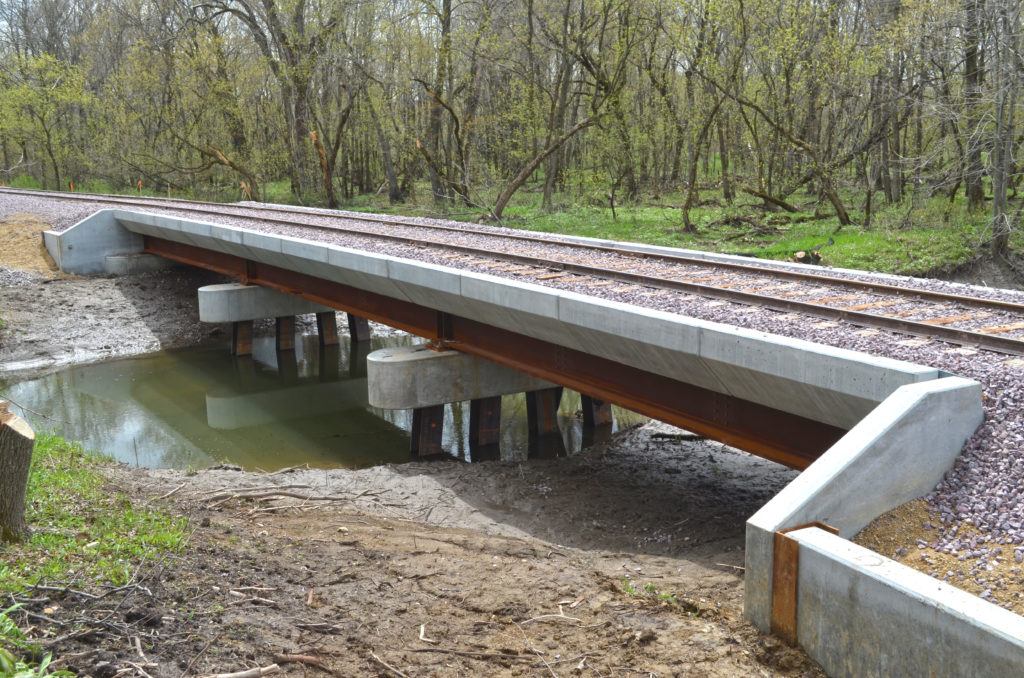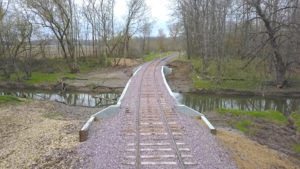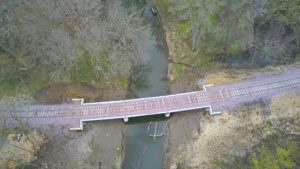Seeley Creek Bridge Completed
Passengers Take First Trip Across New Bridge
On Saturday, May 11, 2019, Mid-Continent Railway Museum celebrated the first crossing of its new bridge over Seeley Creek bridge. The bridge measures nearly 100 feet in length and is located along Mid-Continent’s train ride route near the quiet unincorporated town of La Rue – once a bustling iron mining community.
Museum members and the public were invited aboard the first train to cross the bridge, which departed the North Freedom depot at 11 AM. Local government representatives and project contractors were joined by museum leaders in the train’s first-class cars. After the crossing, the train stopped just clear of the bridge to allow invited guests to view the bridge up close while project leaders gave a brief speech before the train continued on its way.
At a total cost of over $800,000, the bridge represents one of the larger infrastructure improvements ever undertaken by the organization in its 60-year history and comes less than a year after the completion of a major rehabilitation of the museum’s other bridge over the Baraboo River, which itself was a nearly $700,000 project. The two projects were made possible thanks to major financial support from private foundations and individuals and the Sauk County Economic Development Committee.
Balancing History with Usability
The new bridge, made of concrete and steel, replaces a wooden trestle that had been in use since 1927. Decay of the wooden components over time had weakened the structure. The bridge had been closely monitored by structural engineers and it was expected that the weight limit would need to be lowered within a matter of few years. This would have effectively closed the bridge to all train traffic.
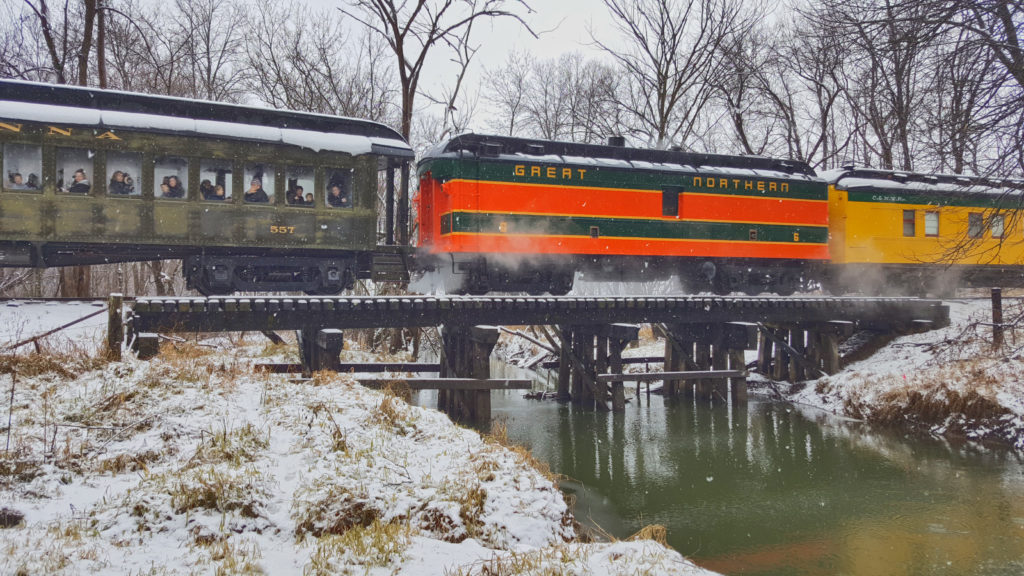
One of Mid-Continent Railway Museum’s “Santa Express” trains rolls over the former Seeley Creek trestle on December 2, 2018, the final day of use of the wooden trestle. MCRM Photo.
Repairing the existing bridge was an option, but the shorter lifespan of wooden components would have locked Mid-Continent into a continuing cycle of expensive maintenance on the bridge every 20-30 years. Finding a design that could easily withstand flash flooding on Seeley Creek was also an important consideration due to increasing numbers of extreme weather events in recent years. Lastly, the anticipated return of steam locomotive operation to Mid-Continent’s rail line also meant that fire-resistance had to be considered as well. Given these factors, museum leaders looked to long-lasting and relatively maintenance-free steel and concrete bridges as the safest and most economical choice.
Ballast-deck design bridges began to appear in common use on the Chicago & North Western Railway in the 1920s. The general design has remained largely unchanged since that time and many such bridges constructed in that era remain in use today. The new Seeley Creek bridge is expected to not require more than minor maintenance during its first 100 years. Cosmetic details of the bridge such as the shape of the concrete tubs, pier caps, and reinforcing walls were modeled after designs of the 1920s versus more current designs to keep the bridge’s appearance as era-appropriate as possible.
- New Seeley Creek bridge. Photo taken May 2, 2019. Jeffrey Lentz Photo.
- Aerial view of new Seeley Creek Bridge. Photo taken May 2, 2019. Jeffrey Lentz Photo.
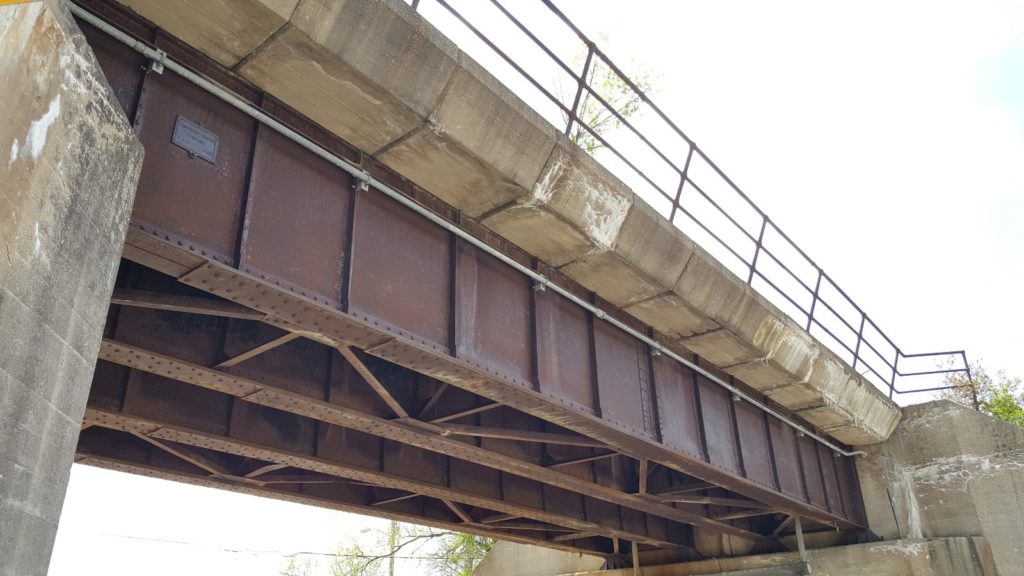
This ex-Chicago & North Western Railway Bridge over South Blvd. in Baraboo, Wis. was built in 1928. It was one of many such ballast-deck bridges that inspired the design of the new Seeley Creek bridge. MCRM photo.
With the new Seeley Creek bridge and rehabilitated Baraboo River bridge both complete, Mid-Continent Railway Museum can look forward to offering historic train rides for many decades to come without any major investments in bridge maintenance.

